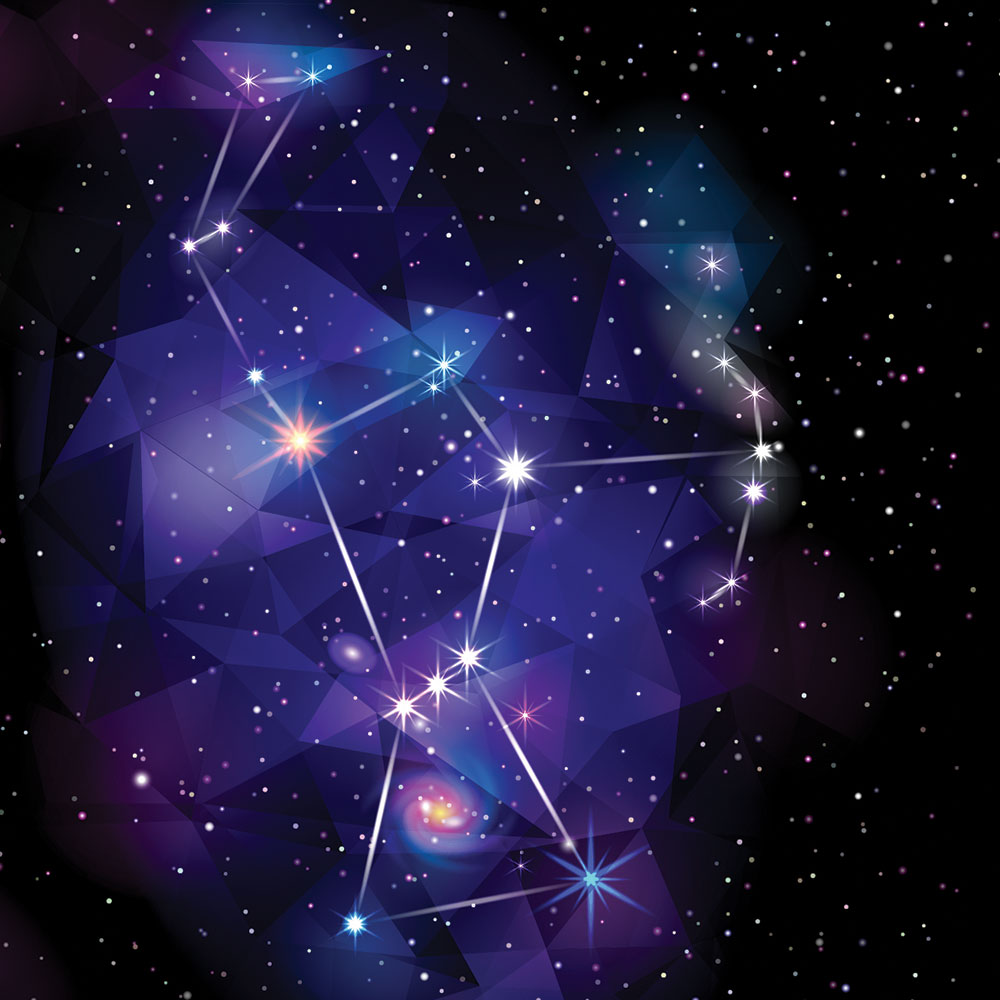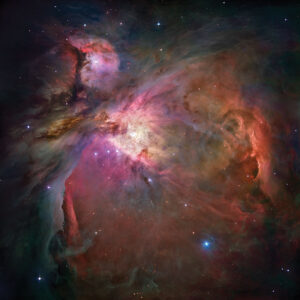Orion the Hunter
Mind Bending | January 2, 2024

By Dr. Teri Gee, Director, Barlow Planetarium
One of the most prominent constellations in the winter months is Orion the Hunter.
In Greek mythology, Orion was killed by a scorpion and then put up in the sky by the Moon goddess, Diana. Because he had been killed by the scorpion, he refused to be in the sky at the same time as the constellation Scorpius. Today, Scorpius is a summertime constellation and Orion is a wintertime constellation.
Orion’s shoulders, feet and belt are all bright stars that are easy to locate in the southern sky.
Orion’s left shoulder is the orange star, Betelgeuse. Betelgeuse is a supergiant. This is a star that is many times larger than our Sun. In fact, if you put Betelgeuse in place of the Sun, the star is so big that it would swallow up all of the planets from Mercury out to Saturn! That means Betelgeuse has a radius of nearly 1 BILLION miles! Yes! The star is that big! Orion’s right foot is the blue supergiant, Rigel. Rigel is one of the brighter stars in the sky and it is 47,000 times brighter than the Sun!
One of the most beautiful parts of Orion is his sword.
The sword of Orion is actually a nebula or a cloud of gas. The Great Orion Nebula is sometimes listed as M42. This is the Messier Catalog number. Back in the 1700s, Charles Messier decided to make a catalog of all the objects he could find that were not comets. This might seem strange, but he was doing that so comet chasers would not waste their time looking at them when they just wanted to see comets.

The Great Orion Nebula
NASA, ESA, M. Robberto (Space Telescope Science Institute/ESA) and the Hubble Space Telescope Orion Treasury Project Team
See the Orion Nebula yourself! The Orion Nebula is one of the only nebulae that can be seen with your naked eye. If you go out into dark skies, give your eyes a chance to adjust to the darkness (about 20 minutes), and then look below Orion’s belt and you should see a faint white haze. That is the nebula. If you have a pair of binoculars, look at that haze and you will see more detail. Bigger binoculars or a small telescope will show you the Trapezium. This is a grouping of 4 very young, hot stars in the middle of the nebula. Astronomers love to study this nebula because it is a place where new stars are born.
Yes, it’s cold during the winter months, but take advantage of the early darkness and get outside to see some beautiful stars!



